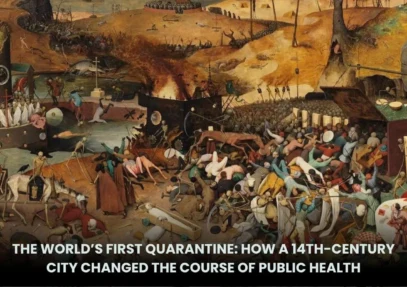Why is eucalyptus considered harmful to the environment?
Choosing the right career path involves self-assessment, research, and thoughtful decision-making. Here’s a step-by-step guide to help you: 1. Understand Yourself Assess Your Interests: Reflect on activities and subjects that excite and engage you. What do you enjoy doing in your free time? EvaluateRead more
Choosing the right career path involves self-assessment, research, and thoughtful decision-making. Here’s a step-by-step guide to help you:
1. Understand Yourself
Assess Your Interests: Reflect on activities and subjects that excite and engage you. What do you enjoy doing in your free time?
Evaluate Your Skills: Identify your strengths and areas of expertise. Are you good at problem-solving, creativity, or leadership?
Clarify Your Values: Determine what matters most to you—money, work-life balance, growth opportunities, or helping others.
2. Explore Career Options
Research Professions: Learn about various careers, their daily tasks, required skills, and long-term prospects.
Use Career Tools: Take online aptitude and personality tests to match your profile with potential career paths.
Speak with Professionals: Reach out to people working in fields of interest to gain real-world insights.
3. Set Career Goals
Short-Term Goals: Identify what you want to achieve in the next 1-3 years, such as internships, certifications, or entry-level roles.
Long-Term Goals: Envision where you see yourself in 10-15 years. This could include leadership roles or expertise in a niche area.
4. Evaluate Educational and Skill Requirements
Determine the qualifications, certifications, and skills needed for your chosen career.
Explore courses, degrees, or vocational training programs that align with your goals.
5. Consider Market Trends
Research industries with growth potential and demand for skills.
Stay informed about technological advancements and emerging career fields.
6. Gain Experience
Internships and Part-Time Jobs: These provide hands-on experience and help you determine if a field suits you.
Volunteer Work: It allows you to explore interests while building your network and resume.
7. Seek Guidance
Career Counselors: Professionals can offer personalized advice and resources.
Mentors: A mentor in your desired field can provide valuable guidance and encouragement.
8. Evaluate and Decide
Weigh the pros and cons of each option, considering factors like job satisfaction, salary, work environment, and growth opportunities.
Be open to adapting your plan as you gain more experience and clarity.
9. Start Small and Stay Committed
Begin with an entry-level position or project to test your choice.
Stay dedicated, but don’t hesitate to pivot if you discover a better-suited path.
10. Keep Learning
Commit to lifelong learning to remain competitive and adaptable in your chosen field.
Your career path is a journey, not a fixed destination. Reflect regularly, and don’t be afraid to explore new opportunities as your interests and circumstances evolve.
See less








Why Eucalyptus Can Be Harmful to the Environment 1. High Water Consumption and Soil Depletion Water-intensive nature: Eucalyptus trees have deep root systems and a rapid growth rate, which lead them to consume large amounts of water. In water-scarce regions or during dry seasons, this can drasticallRead more
Why Eucalyptus Can Be Harmful to the Environment
1. High Water Consumption and Soil Depletion
Water-intensive nature: Eucalyptus trees have deep root systems and a rapid growth rate, which lead them to consume large amounts of water. In water-scarce regions or during dry seasons, this can drastically reduce groundwater levels.
Impact on local water cycles: Excessive water uptake may lower water tables and reduce water availability for native plants, agriculture, and even human consumption.
Soil drying: Eucalyptus roots can dry out soil and lower moisture content, making the land less fertile over time.
2. Allelopathic Effects
Chemical inhibition: Eucalyptus leaves and roots release chemicals (allelochemicals) into the soil that inhibit the growth of understory plants and competing vegetation.
Biodiversity loss: This chemical warfare reduces the diversity of native plant species around eucalyptus stands, causing monocultures that support fewer animals and insects.
3. Invasive Potential
Non-native species: In many parts of the world (e.g., parts of Africa, South America, and India), eucalyptus is not native but was introduced for timber, paper, or oil production.
Outcompeting native flora: Its fast growth and allelopathic traits allow it to outcompete and displace indigenous vegetation, leading to ecological imbalance.
Altered habitats: This shift affects the entire ecosystem, including soil microorganisms, herbivores, and pollinators.
4. Fire Hazard
High flammability: Eucalyptus trees contain volatile oils that make their leaves, bark, and litter highly flammable.
Increased wildfire risk: Dense eucalyptus plantations or forests can increase the intensity and spread of wildfires, which can threaten both ecosystems and human settlements.
Post-fire recovery: After fires, eucalyptus can resprout quickly, which sometimes leads to repeated cycles of fire and regrowth, preventing natural succession of native species.
5. Impact on Wildlife
Habitat alteration: Native animals that depend on indigenous plants may find eucalyptus-dominated areas unsuitable.
Reduced food sources: Many native herbivores do not feed on eucalyptus leaves, which are tough and chemically defended.
Limited biodiversity: Reduced plant diversity often correlates with lower overall biodiversity, affecting birds, insects, and other fauna.
Balancing the Perspective
Eucalyptus is highly valued for:
Fast growth and timber production
Essential oils with commercial uses
Soil stabilization in some degraded areas
However, the environmental risks often outweigh the benefits in sensitive ecosystems or where eucalyptus is introduced invasively.
Summary
Eucalyptus is considered harmful environmentally primarily because of its:
Excessive water use,
Suppression of native plants via allelopathy,
Invasive spread,
Increased wildfire hazards,
Negative effects on native biodiversity.
Understanding these impacts helps inform sustainable forestry and land management decisions that balance economic and ecological priorities.
See less